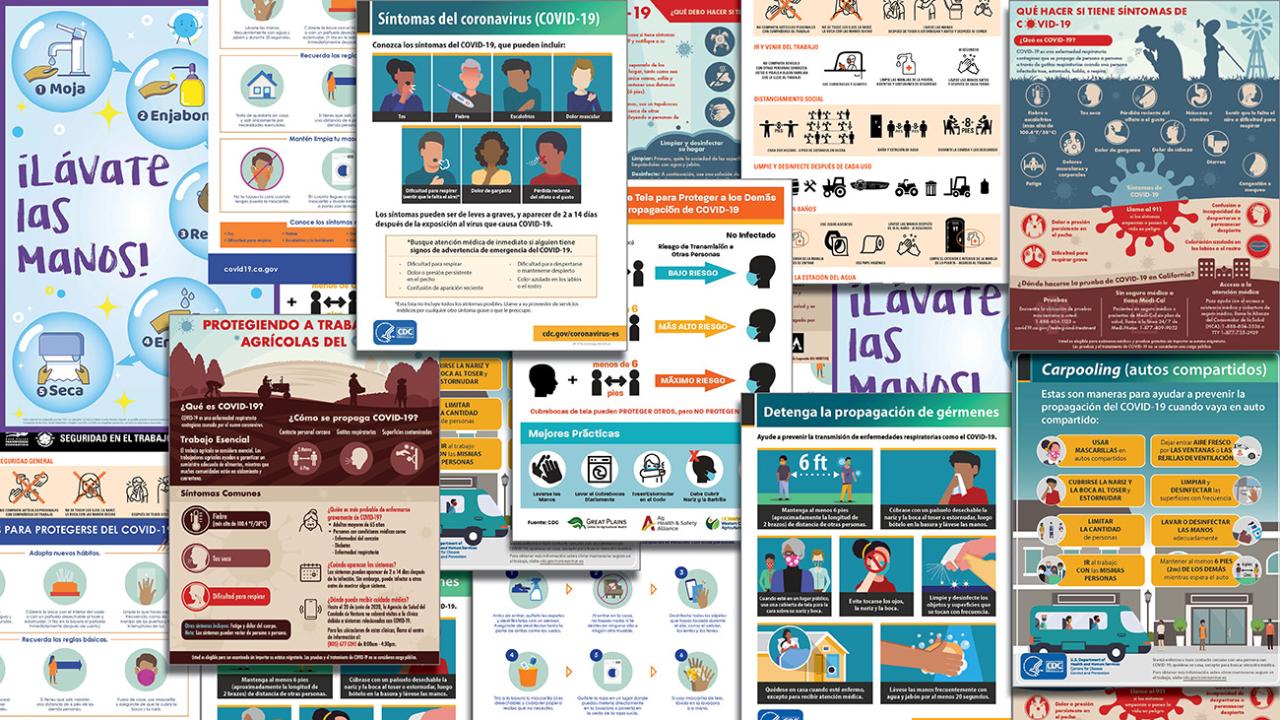
Research Highlight: Readability of Health Communications for Farmworkers
My name is Sofia Ledesema and I am one of the UC Davis Undergraduate Public Health Scholars who was funded this summer to conduct research under the mentorship of Dr. Kent Pinkerton at the Western Center for Agricultural Health and Safety (WCAHS). With the support of Dr. Pinkerton and Dr. Heather J. Hether from the UC Davis Communications Department, I created a study that focused on the readability of health communications for farmworkers.
My interest in public health and health equity stems from my experiences as a volunteer at La Clínica de la Raza in Fruitvale, CA; as a Spanish-language interpreter at various clinics; and as an intern at John Muir Hospital, where I helped to create a curriculum for a diabetes support group. Through these experiences and my completion of a health communication course at UC Davis, I learned that there are many factors that determine the efficacy of health communication materials.
The average level of education completed by agricultural workers in the United States is the 8th grade and many farmworkers do not speak English (NAWS).
When my grandparents immigrated to the United States from Mexico, it was hard for them to manage their diabetes because health information was not delivered in a way that they could understand. The health materials—if they were available in Spanish—were often too lengthy or used complex words. My grandparents, who were only able to complete an elementary level education, were confused and unsure of how to manage their diseases because the materials were not tailored culturally or linguistically for the audience. Their experience inspired me to focus my research project on health literacy.
Identified Websites
- Western Center for Agricultural Health and Safety at UC Davis
- Migrant Clinician's Network
- Centers for Disease Control and Prevention (CDC)
- Student Action with Farmworkers
- Cal/OSHA
- Cal/OSHA Infection Prevention in Agriculture (PDF)
- National Council for Occupational Safety and Health (COSH)
- North Carolina Department of Health and Human Services (PDF)
- Vision y Compromiso
- University of Wisconsin-Madison Extension
Research Methods
My objective for this project was to evaluate the readability level of COVID-19 educational materials targeted at Spanish-speaking agricultural workers. To identify resources online, I Googled the phrase “COVID-19 recursos para trabajadores agrícolas en Español” (COVID-19 resources for agricultural workers in Spanish). The first ten resources listed in the search results were included in my sample.
I used the Fernández-Huerta index, a readability formula adapted for written Spanish, to determine the readability level. Tests were also conducted using the Legibilidad website, which uses software that applies the readability formula to the text.
Preliminary Findings
Preliminary results demonstrated some variation in readability among the websites, but the level of readability in nine out of the ten websites was at an 8th grade reading level or below. Notably, three of the websites—National Council for Occupational Safety and Health, Vision y Compromiso, and the Western Center for Agricultural Health and Safety at UC Davis—had a readability score at the 6th grade reading level.
Conducting a review of health education materials to ensure the intended audience can understand them is critical, particularly during the COVID-19 pandemic, when workers may be relying more on written communication instead of in-person trainings.
Next Steps
Future directions for this research include a periodic review of the readability of updated training materials and to expand my investigation of Spanish language COVID-19 educational materials by using the CDC Clear Communication Index, a comprehensive tool developed to assess public communication materials.
Through this research, I hope to learn more about effective public health communication and to identify gaps and strengths in existing materials. By identifying these gaps, I hope to improve the accessibility of health communication materials for the agricultural community.
